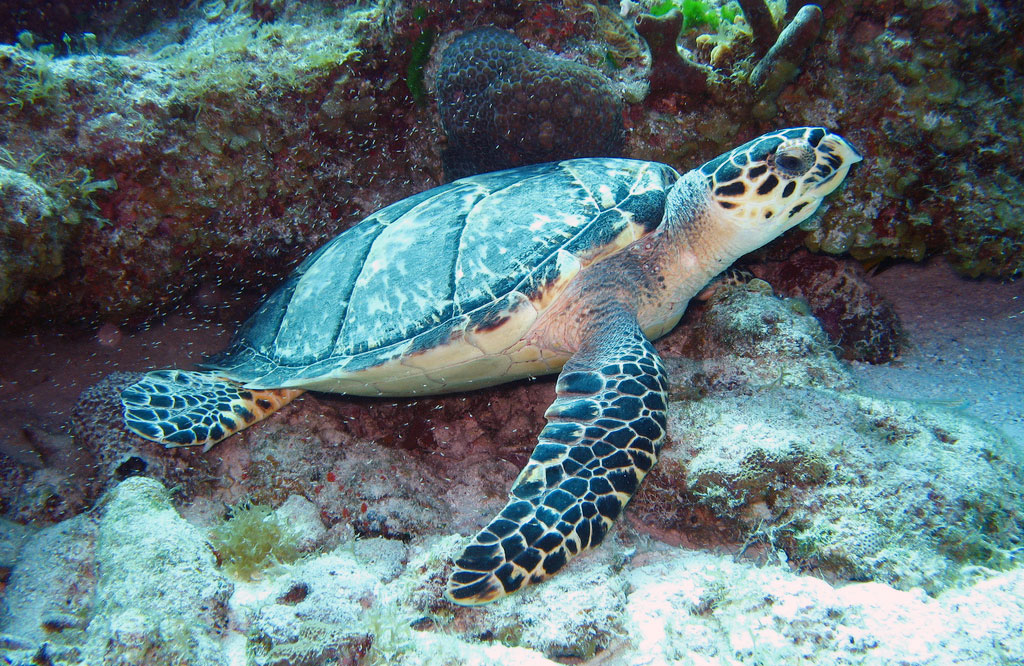
A sea turtle in the waters off Cozumel. Photo © Kevin T., licensed Creative Commons Attribution.
All eight of the world’s sea turtle species are endangered, thanks to a combination of antiquated fishing practices, habitat destruction, and a taste for turtle products. Four turtle species—hawksbill, Kemp’s ridley, green, and loggerhead—nest on the shores of the Yucatán Peninsula, and until recently, were a common supplement to the regional diet. Turtles make easy prey, especially females clambering on shore to lay eggs. They are killed for their meat, fat, and eggs, which are eaten or saved for medicinal purposes, as well as for their shells, which are used to make jewelry, combs, and other crafts. On Isla Cozumel, travelers can volunteer to monitor nests and to release hatchlings into the sea.Various environmental organizations collaborate with the Mexican government to protect sea turtles and their habitats; they maintain strict surveillance of known nesting beaches to stop poaching and have developed breeding programs, too. This, in combination with laws that prohibit the capture and trade of sea turtles or their products, has tremendously increased awareness about their protection.On Isla Cozumel, travelers can volunteer to monitor nests and to release hatchlings into the sea. Nesting season runs May-September, and during that period volunteers join biologists on nighttime walks of Cozumel’s beaches, locating and marking new nests, and moving vulnerable eggs to protected hatcheries. From July to November, volunteers release hatchings, typically at sundown, by encouraging the tiny turtles to move toward the water (without touching them) and scaring off birds in search of an easy meal.
Dirección Municipal de Ecología y Medio Ambiente (Calle 11 at Av. 65, tel. 987/872-5795) monitors Cozumel’s sea turtles and manages volunteer opportunities. It maintains a visitors center (9:30am-2pm and 3:30pm-5:30pm daily May-Nov. only) in a small trailer, usually parked on the roadside near Playa San Martín on the eastern side of the island. Inside are a handful of aquariums, Plexiglas-enclosed nests, and more; stop by for information on upcoming beach walks and hatchling releases, or just to learn more about these endangered creatures. Donations are appreciated. Spanish is useful but not required.
Similar volunteer opportunities also are available in Akumal at the Centro Ecológico Akumal (CEA, tel. 984/875-9095) as well as on Isla Mujeres at Tortugranja (Carr. Sac Bajo 5, tel. 998/888-0507).
Excerpted from the Eleventh Edition of Moon Cancun & Cozumel.